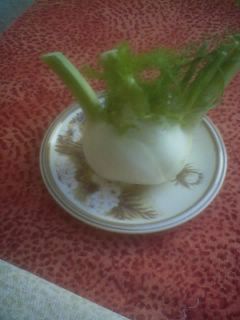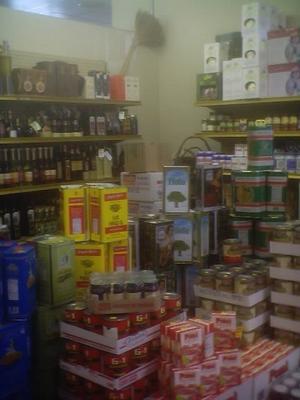
In my neighborhood, eggs seem to grow on trees! Giant, colorful eggs sprout once a year, in springtime, at just one house on the block. I’ve always wondered what the homeowners DO with all those eggs? And just how tall IS that Easter Bunny, to be able to attach the eggs to such a big tree? And, which DID come first, the tree – or the eggs?
Without delving deeper into this little piece of fiction, or into the infamous and unanswerable chicken-or-egg-first question, let’s just enjoy eggs for what they are and focus for a moment on this week’s favorite: the hard-boiled Easter egg. Whether delivered by the Easter bunny in baskets or buckets or on trees, these tasty hard-cooked, versatile eggs can be eaten from breakfast to dinner and all times in between.
Many different variations of cooking method have been promoted, from time to time. The most-common method simply involves placing eggs into a saucepan wide enough to allow them to sit in one layer without crowding, deep enough to allow one inch of water to cover the top of the eggs and a couple of inches more space to allow for boiling froth.
Over high heat, bring the eggs and water just to a full boil. Then, remove the pan from the heat immediately and cover with a tight-fitting lid. Let the eggs stand in the pan, covered for 15 minutes. Then, pour off the hot water and run cold water over the eggs to stop them from cooking and to make peeling easier.
Shelling hard-cooked eggs is also made easier by using eggs that are at least several days old, gently tapping the entire surface of the shell against a flat surface and peeling from the large end. Some people like to peel eggs under running water to further assist in the shell-removal process.
The following delicious recipe using hard-boiled eggs comes from the LIDIA’S FAMILY TABLE cookbook (Alfred A. Knopf Publishers, New York, 2004), by Lidia Matticchio Bastianich with David Nussbaum. Techniques and recipes from this book are also featured in Ms. Bastianich’s syndicated PBS-TV series.
Both the TV show and the cookbook allow aspiring Italian cooks to spend some virtual time in Lidia’s kitchen and learn the techniques that she uses – the ideas and methods that were passed to her through her family and that she has developed for use in her highly-popular restaurants in New York City, Pittsburgh and Kansas City.
Starting from the basics, Ms. Bastianich describes beloved Italian everyday favorites and then progresses to tried-and-true variations, improvisations and cook-to-cook tips – just as she would if standing next to a cooking enthusiast in her own kitchen. As she so often says on her TV show, she doesn’t want people to be a slave to the recipes but just to get ideas to use in their own cooking. A devoted author and nationwide lecturer, she also provides lots of information and ideas at her website: http://www.lidiasitaly.com/.
So, let’s gather up those hard-cooked Easter eggs and get started!
CAULIFLOWER AND EGG SALAD
(Serves 6 or more)
1 large head cauliflower (1-1/2 to 2 pounds)
½ teaspoon or more salt
3 hard-boiled eggs
3 tablespoons or more white wine vinegar
¼ cup or more extra-virgin olive oil
Freshly ground pepper to taste
Tear off all the outer leaves attached to the base of the cauliflower; reserve any tender green leaves. Cut out the bottom core, and snap or slice off all the big florets from the inner stem. Cut the florets into 1-inch chunks or thick slices (don’t break them up into tiny florets).
Bring 3 or 4 quarts of water in a large pot to the boil, drop in the florets and reserved leaves, and cook, uncovered, at a steady boil for 5 minutes, or until cooked through but not soft. Lift out the cauliflower, spread the pieces out in a colander, and sprinkle with ¼ teaspoon of the salt. Cool to room temperature.
Before serving, slice the eggs in wedges, and cut the wedges into 2 or 3 pieces each. In the bottom of a large mixing bowl, whisk together the vinegar, oil, another ¼ teaspoon salt, and grinds of pepper. Put all the cauliflower in the bowl, and tumble to dress all the pieces. Scatter the egg pieces over the top, and fold them in. Taste, and adjust the seasonings.
Arrange the salad on a serving platter, or portion on salad plates.
*Copyright Note*: Lidia Bastianich specifically authorized this recipe reprint, by the Ingredient Sleuth, in this posting.
The additional notes to the recipe indicate that this dish is good as a first course, a side dish or a partner with broccoli for a supper dish. As Lidia says, “At my grandma’s house, we used to have this kind of salad many a time, with a slice of homemade bread and some good cheese, for supper.”
The LIDIA'S FAMILY TABLE cookbook is filled with photos -- of beautiful food and of four generations of Lidia’s family-- showing the ways in which food serves as an integral part of the family's routine, creating an ongoing interaction among all generations. For the Ingredient Sleuth, those photos and the explanations never fail to bring a smile. Somehow, Ms. Bastianich has managed to capture, in book format, those person-to-person encounters that magnify all good cooking and good food.
As the Easter baskets are gathered and the pyramid of colorful eggs is placed lovingly in that bowl in the refrigerator, I hope that today’s recipe comes in handy. Enhanced by the addition of just a few additional ingredients, those eggs of the hard-boiled variety will be ready to be gobbled up by eager salad eaters in no time!
Happy Easter, buon appetito -- and as Lidia says at the close of every TV show, "tutti a tavola a mangiare!" (All to the table to eat!)










